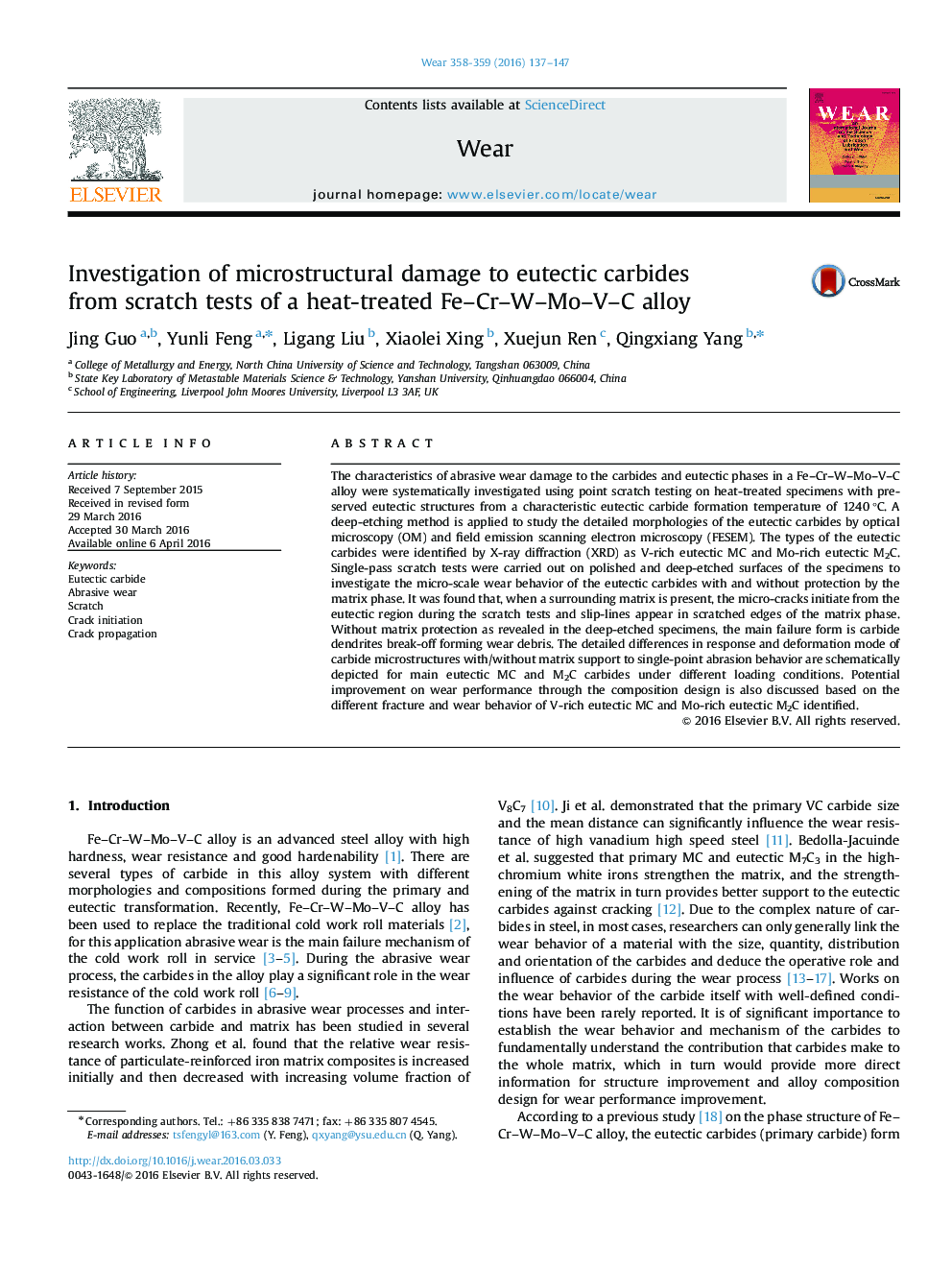| Article ID | Journal | Published Year | Pages | File Type |
|---|---|---|---|---|
| 616901 | Wear | 2016 | 11 Pages |
•Wear behavior of carbide itself with/without protection of matrix was investigated.•Wear mechanism of carbide is related with its morphology, orientation and type.•Microcracks within the carbide are classified into inter- and transgranular crack.•During the wear process, matrix and eutectic carbide are interacted with each other.
The characteristics of abrasive wear damage to the carbides and eutectic phases in a Fe–Cr–W–Mo–V–C alloy were systematically investigated using point scratch testing on heat-treated specimens with preserved eutectic structures from a characteristic eutectic carbide formation temperature of 1240 °C. A deep-etching method is applied to study the detailed morphologies of the eutectic carbides by optical microscopy (OM) and field emission scanning electron microscopy (FESEM). The types of the eutectic carbides were identified by X-ray diffraction (XRD) as V-rich eutectic MC and Mo-rich eutectic M2C. Single-pass scratch tests were carried out on polished and deep-etched surfaces of the specimens to investigate the micro-scale wear behavior of the eutectic carbides with and without protection by the matrix phase. It was found that, when a surrounding matrix is present, the micro-cracks initiate from the eutectic region during the scratch tests and slip-lines appear in scratched edges of the matrix phase. Without matrix protection as revealed in the deep-etched specimens, the main failure form is carbide dendrites break-off forming wear debris. The detailed differences in response and deformation mode of carbide microstructures with/without matrix support to single-point abrasion behavior are schematically depicted for main eutectic MC and M2C carbides under different loading conditions. Potential improvement on wear performance through the composition design is also discussed based on the different fracture and wear behavior of V-rich eutectic MC and Mo-rich eutectic M2C identified.
